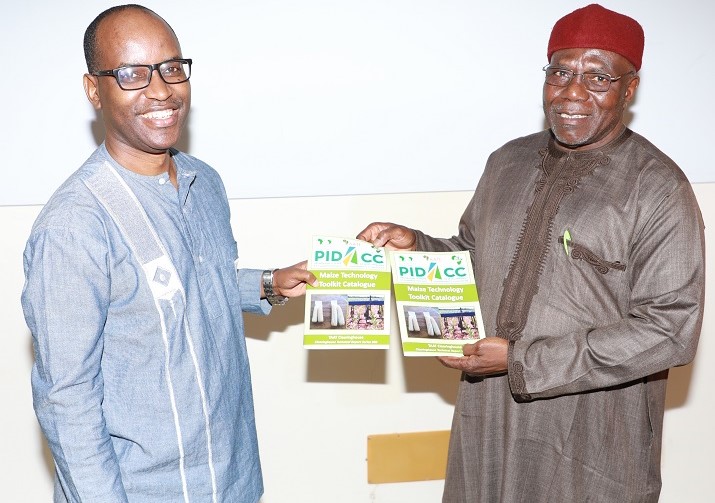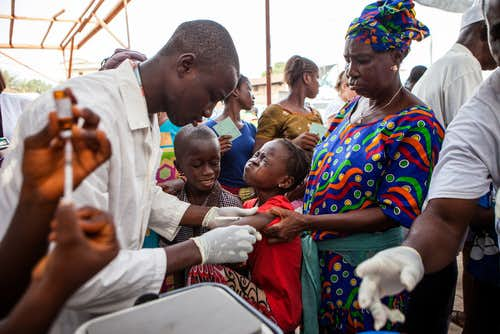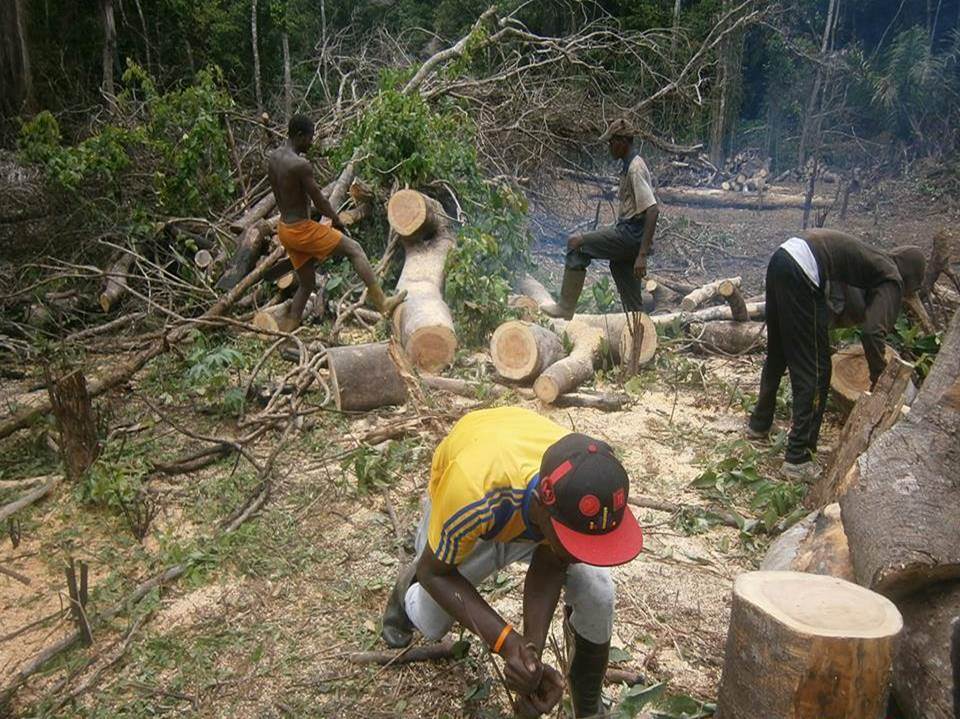
By Greg Odogwu
Environmentally speaking, this is not the best of time for Nigeria. A fortnight ago, the news broke that at least 28 children under the age of five have been killed by drinking stream water contaminated with lead in Niger State, a northern state. Officials blamed the contamination on illegal mining.
As of May 12, 28 out of 65 children who became ill from the contamination had died; also many cows, goats and chickens and other livestock were killed too. The affected children were found to have high serum lead levels – 17 to 22 times higher than the acceptable limits as established by the World Health Organisation.
Lead poisoning is a medical condition caused by increased levels of the heavy metal lead in the body. Symptoms include abdominal pain, confusion, headache, anaemia, irritability, and in severe cases seizures, coma and death.
Considering that illegal mining is a widespread practice in the natural resources-endowed nation, there is likelihood that the lead contamination must have been gathering up for years, and probably killing the villagers in instalments all these while without anyone taking note.
Meanwhile, this is not the first time Nigerian children have been killed by lead poisoning brought about by illegal mining.
In 2010, a similar but more catastrophic incident happened in Zamfara State another northern state. The Federal Ministry of Health then officially reported that lead poisoning had killed 163 Nigerians there, 111 of them children between the ages of five and 10. It was brought about by the soaking up of lead from the gold ore these rural people were illegally mining.
Two years later, officials had put the number of deaths at 500 children, with more than 2,500 other children still in dire need of medical attention. In fact, it was described by the international community as the worst case of lead poisoning in recent history.
Fresh cases kept erupting in the state; and it took the concerted efforts of local civil society organisations and international aid agencies to ‘force’ the Nigerian government to decontaminate and clean up the affected communities.
And then a couple of years down the lane, it seems the strange horror and death is back. This time the Grim Reaper is in Niger State!
Nevertheless, it would be germane to put lead poisoning in the proper perspective because all evidence points to its inevitable connection with poverty and corruption. In the case of Niger State, the children innocently drank the water in their village stream. And it was not as if the local miners intentionally went and dumped toxic lead in the stream. Let me examine how it happens.
Lead is a heavy metal that occurs naturally in the earth’s crust, and it is mined for use in a variety of materials including paint, ceramics glaze, batteries, and pipes. Lead also commonly exists in ore containing other frequently mined materials, such as iron, copper, silver, and zinc.
Waste rock and tailings from mining and ore processing are not always stored or disposed of properly, and lead toxins in this material can leach into the soil and nearby water systems, impacting agriculture and water resources. In some cases, waste and tailings are dumped out in the open and near residential areas where people may come into contact with contaminants, or children may play near or on toxic material.
Because lead can be absorbed through dermal and mouth contact, this form of exposure can be particularly dangerous for children. So it is not only Niger or Zamfara children that are at risk. Nigeria is blessed with solid minerals almost in every state, and because the government is not doing enough to make mining safe and well regulated, every part of the country is at risk of this environmental hazard.
So also in other parts of Africa where such circumstances and lax government regulation persists.
As for Zamfara, a report by the US-based Centre for Disease Control (CDC) confirmed that the environmental contamination and timing of the outbreak were related to increase in illegal mining activities and the greater involvement of women and children in processing lead-contaminated gold ore in their homes.
Suddenly, the whole villages became a beehive of economic activities, people were making up to N100,000 a week, and even the labourers were earning up to N2,000 a day: an amount wearisome farming could never fetch. But no one knew that the precious gold ore was laced with lethal doses of poisonous lead as they toiled to harvest their own earth-money.
Infants were strapped to their mothers’ backs as the women worked on the gold dust, inhaling the lead. Young children played with the little pebbles of gold as their elders brought them home to process. Everybody was inhaling the lead poison, but naturally it is more lethal in children.
Before their very eyes, the communities watched in horror as their children developed seizures and were dropping dead one after the other without any explanation. The toll kept rising. In due time, 30 villages and an estimated 500 children below five years old, lay dead. Hundreds of others are blind, deaf and crippled.
A joint study by the World Health Organisation and the Zamfara State Ministry of Health also identified more than 200 villages where children may have been poisoned by lead. It was estimated that up to 30,000 people could have been affected with a good percentage of them children.
In my opinion, the Nigerian government is not doing enough to curb lead poisoning by nipping it in the bud. A candid appraisal of the whole scenario leaves no doubt that another lead poisoning disaster will break out in yet another part of the country if urgent plan is not consciously instituted to stem the menace.
One wonders therefore what efforts Nigeria’s Ministry of Mines and Steel is mustering for effective containment and prevention of lead poisoning via small scale and artisanal mining through the years. Naturally, when an ecological emergency like this occurs, everybody looks at the ministry of health for answers; but the truth is that fighting the menace goes beyond knee-jerk medical response to disasters.
Rather than wait till Death comes knocking, it is best to fight it through the whole infrastructure of regulation of small scale mining, otherwise known as ASM. Such national task force like the country’s Mines Surveillance Task Force should wake up and show more responsibility and efficiency in carrying out its duties.
What is more, with the fall in global crude oil price, Nigeria should be thinking of mopping up more revenue from its mineral resources. In fact, it is a matter of historical record that the original crisis circa Zamfara deaths was sparked by a rise in gold prices, which soared from $600 per ounce in 2006 to nearly $1,900 per ounce in 2011. Eager to earn money, local residents began processing ore for gold.
The natural resources are so enormous that many countries could only wish to trade places with this rich-but-poor West African regional leader. Nigeria has 44 minerals – with 11 of them discovered just within the past one and half years.
It has also been severally reported that some foreign nationals including Indians and Chinese businessmen connive with local authorities and government regulators to rip Nigeria off of the benefits of these solid minerals. But the saddest part of the story is when carrying out these unpatriotic and horrific practice, they kill the children, decimate the livestock and endanger the environment in the process.
Therefore, one can conclude that curbing impunity and corruption in the mining sector is a good way to start that much-taunted ‘CHANGE’ which has been promised Nigerians by the incoming government under the famous incorruptible former military dictator, Muhammadu Buhari.











